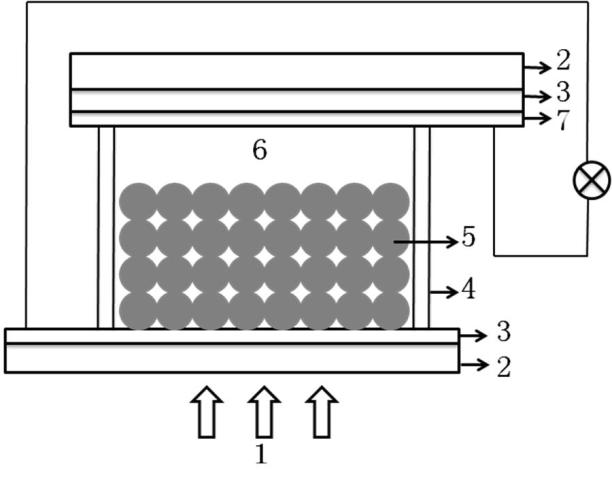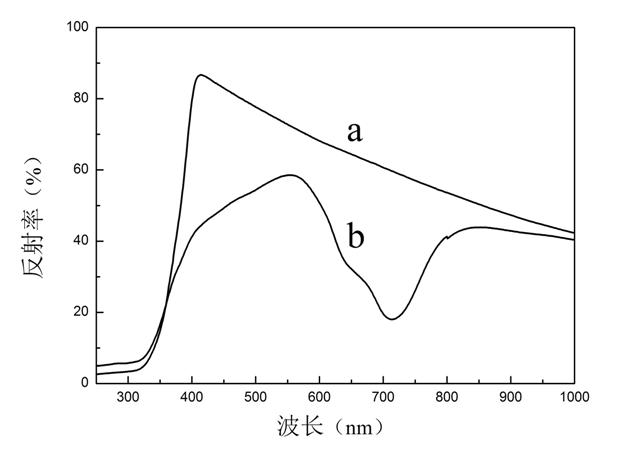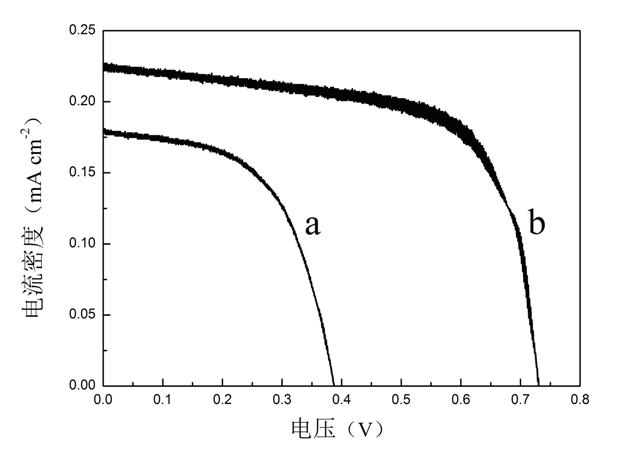Preparation of solar battery sensitized by utilizing zinc phthalocyanine bisphenol A epoxide derivative
A zinc phthalocyanine bisphenol, solar cell technology, applied in photosensitive devices, circuits, capacitors, etc., can solve problems such as high cost and environmental pollution
- Summary
- Abstract
- Description
- Claims
- Application Information
AI Technical Summary
Problems solved by technology
Method used
Image
Examples
Embodiment Construction
[0024] The present invention will be described in detail below through examples.
[0025] Example: Preparation and implementation process of dye-sensitized solar cells based on zinc phthalocyanine bisphenol A epoxy derivatives
[0026] (one) Synthesis of zinc phthalocyanine bisphenol A epoxy derivatives:
[0027] A. Preparation of Tetraaminozinc Phthalocyanine
[0028] (a) Preparation of tetranitrozinc phthalocyanine by phthalic anhydride-urea solvent method
[0029] After mixing 2.73 g of zinc acetate tetrahydrate, 9.70 g of tetranitrophthalic anhydride, 27.63 g of urea (the molar ratio is 1:4:40) and 0.21 g of ammonium molybdate tetrahydrate and grinding them evenly with a mortar, they were added to In a 500 ml three-neck flask, add 100 ml of nitrobenzene as a solvent. Stir with an electric mixer, heat to 180°C in an oil bath, condense and reflux, react for 5 hours, cool, filter, and wash the filter cake with methanol until there is no nitrobenzene smell. 1 mol ...
PUM
| Property | Measurement | Unit |
|---|---|---|
| Thickness | aaaaa | aaaaa |
Abstract
Description
Claims
Application Information
 Login to view more
Login to view more - R&D Engineer
- R&D Manager
- IP Professional
- Industry Leading Data Capabilities
- Powerful AI technology
- Patent DNA Extraction
Browse by: Latest US Patents, China's latest patents, Technical Efficacy Thesaurus, Application Domain, Technology Topic.
© 2024 PatSnap. All rights reserved.Legal|Privacy policy|Modern Slavery Act Transparency Statement|Sitemap



